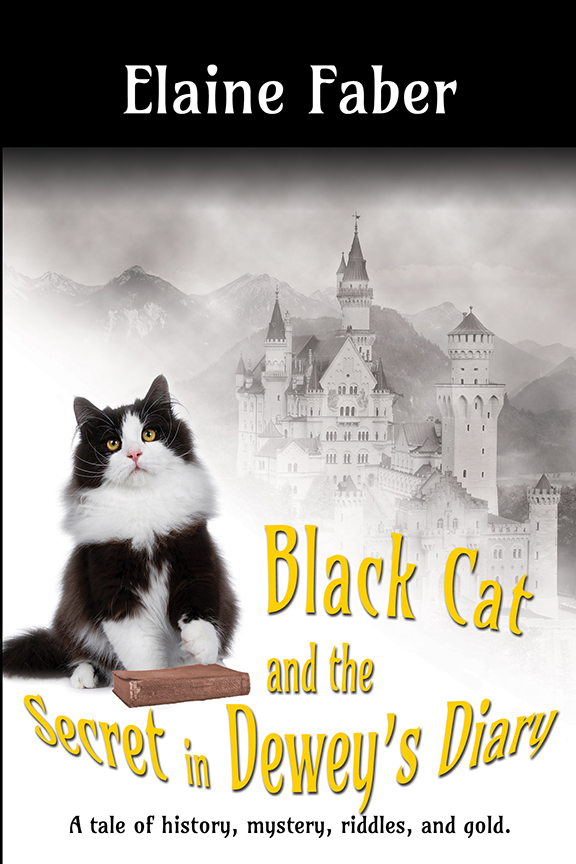Today’s guest blogger is Jodie Wolfe, a former columnist for  Home School Enrichment who now creates novels where hope and quirky meet. She is also the co-founder of the blog Stitches Thru Time. When not writing, she enjoys spending time with her husband in Pennsylvania, reading, walking, and being a Grammie. Today, she’ll explore an aspect of being a pioneer and what it takes. And it is Valentine’s Day, right?
Home School Enrichment who now creates novels where hope and quirky meet. She is also the co-founder of the blog Stitches Thru Time. When not writing, she enjoys spending time with her husband in Pennsylvania, reading, walking, and being a Grammie. Today, she’ll explore an aspect of being a pioneer and what it takes. And it is Valentine’s Day, right?
I’ve always had a fascination with the 19th Century. I think part of it is because of the pioneer spirit. A time when people left all that they knew in hopes of building a better life somewhere else, typically in the Midwest. I can only imagine the amount of work, planning, and building it would take to start with nothing in order to dig a well, build a house, plant crops, and eventually have a homestead or farm that could support life for you and your family.
One aspect of the pioneer spirit that’s always interested me is the idea of becoming a mail-order bride. Leaving your current life to become a complete stranger’s wife. Now of course, sometimes they corresponded long distance for quite some time before they decided to get married. Sometimes the fella sent for the gal and they were hitched right away, while other times he sent for her and they had a couple weeks of getting to know each other before they tied the knot. At times a photo of sorts was exchanged, but that wasn’t always the case.
Some guys advertised for a wife in order to cook and clean for them, or to help with children if he had a spouse who’d died, and he was on his own to raise his young ones. A whole slew of scenarios was possible. I contemplated and researched for a while before I came up with a story line for my new book, Taming Julia. I wondered what would happen if a pastor was dictated by his congregation to find a wife if he wanted to keep his job? Their real reason for their doing so was so that he would consider the daughters of those in his congregation. But instead, he decides to advertise for a wife who is willing to marry by proxy.
Proxy is another interesting component of the era of mail-order brides. Some married when they arrived while others chose to marry by proxy (while apart – more of a legal document of sorts) that made them legally married before the woman traveled to where the fella lived.
That’s what I chose to happen in my story. The preacher is given an ultimatum from his congregation to marry by a certain time. In order for that to happen, he advertises for a mail-order bride with the following qualifications:
Matrimony News, February 6, 1875 edition
Minister bachelor aged 27, height 5 feet 10 inches seeks genteel, honest and first-rate homemaker with a desire to serve God. Must be willing to marry by proxy and arrive in Burrton Springs, Kansas by May 1.
 During the era, there were many such advertisements in the newspaper for a bride. My twist to the story is that the wife who arrives isn’t anything like what the minister wanted. So now he’s faced with a dilemma of what can he do to tame his new bride. It made for a fun story to write. Here’s a glimpse of the back cover:
During the era, there were many such advertisements in the newspaper for a bride. My twist to the story is that the wife who arrives isn’t anything like what the minister wanted. So now he’s faced with a dilemma of what can he do to tame his new bride. It made for a fun story to write. Here’s a glimpse of the back cover:
In 1875, Kansas bachelor Drew Montgomery’s sole desire is to serve God, but his congregation’s ultimatum that he marry or leave, forces him to advertise for a wife by proxy.
Jules Walker strides into Drew’s life wearing breeches and toting a gun and saddle–more cowboy than bride. After years on the trail, she’s not exactly wife material, but she longs for home and family, and will do anything to ensure Drew never discovers what she really is.
How about you, can you imagine marrying a complete stranger and taking a chance on a new life?
Let’s hear some comments on that. And guys, you can offer what you think about ordering a bride off Amazon. Click comments below, or the little balloon at the upper right of this blog. Thanks.
Where you can find Jodie online: Website: https://www.jodiewolfe.com
Facebook: https://www.facebook.com/Jodie-Wolfe-553400191384913
Goodreads: https://www.goodreads.com/author/show/15220520.Jodie_Wolfe
Amazon Author Page: https://www.amazon.com/Jodie-Wolfe/e/B01EAWOHXO/ref=dp_byline_cont_ebooks_1
Purchase Links for Taming Julia:

 is a collection of written works. It can be a collection of poems, plays, short stories, songs, novellas, or excerpts from longer books. These do not have to be related in any way, although often there is a theme associated with the anthology. There is not a real limit on how many – no minimum and no maximum. The works are generally chosen by a compiler, which can be a single person or a committee. An anthology generally contains works by several authors. However, there is nothing preventing an anthology containing various works of a single author. And, today, anthology may be used for a series of TV shows, or recordings of a single group or performer.
is a collection of written works. It can be a collection of poems, plays, short stories, songs, novellas, or excerpts from longer books. These do not have to be related in any way, although often there is a theme associated with the anthology. There is not a real limit on how many – no minimum and no maximum. The works are generally chosen by a compiler, which can be a single person or a committee. An anthology generally contains works by several authors. However, there is nothing preventing an anthology containing various works of a single author. And, today, anthology may be used for a series of TV shows, or recordings of a single group or performer. that royalties will not be paid. Naturally, this must be determined before the call for entries. If the project pays for the expenses of production and a surplus exists, from the beginning those submitting works should agree any profits be used either to fund the next project, or donated to help the library or some other group fostering literacy. If you have high profile authors involved, then the division of royalties should be clear before submissions are sought.
that royalties will not be paid. Naturally, this must be determined before the call for entries. If the project pays for the expenses of production and a surplus exists, from the beginning those submitting works should agree any profits be used either to fund the next project, or donated to help the library or some other group fostering literacy. If you have high profile authors involved, then the division of royalties should be clear before submissions are sought. However, it is best to have one editor. There can be a committee to help during the selection process. But when you are getting down to the final editing, while several may read for possible mistakes, a single person should be making the final decisions. Committees can get hung up with differing opinions and the project can grind to a halt. In the end, one person has to be in charge to complete the project.
However, it is best to have one editor. There can be a committee to help during the selection process. But when you are getting down to the final editing, while several may read for possible mistakes, a single person should be making the final decisions. Committees can get hung up with differing opinions and the project can grind to a halt. In the end, one person has to be in charge to complete the project. Her latest is Small Town Mystery series, Book #2 – Murder at Maple Ridge. She’s had a varied career, including managing a sporting goods department and proprietor of a resume writing service. But her passion has always been writing fiction. Here she talks about the mystery of writing.
Her latest is Small Town Mystery series, Book #2 – Murder at Maple Ridge. She’s had a varied career, including managing a sporting goods department and proprietor of a resume writing service. But her passion has always been writing fiction. Here she talks about the mystery of writing.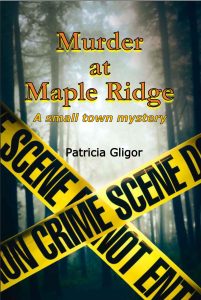 Which brings me to my newest release: Murder at Maple Ridge. Once again, an old house inspired me. One I’d driven by – and admired – for many years on the way to a park about an hour from where I live. The knowledge I gained working in sporting goods – about firearms and hunting –was invaluable.
Which brings me to my newest release: Murder at Maple Ridge. Once again, an old house inspired me. One I’d driven by – and admired – for many years on the way to a park about an hour from where I live. The knowledge I gained working in sporting goods – about firearms and hunting –was invaluable. Donna writes historical suspense. Double Jeopardy is her latest, due out in January, 2020. She and her alter ego Leeann have published more than thirty novellas and full-length novels. They are active in American Christian Fiction Writers, Sisters in Crime and other groups. She lives in Denver with her husband, Patrick. Today, she gives us the story behind the story, plus a chance to receive a free book.
Donna writes historical suspense. Double Jeopardy is her latest, due out in January, 2020. She and her alter ego Leeann have published more than thirty novellas and full-length novels. They are active in American Christian Fiction Writers, Sisters in Crime and other groups. She lives in Denver with her husband, Patrick. Today, she gives us the story behind the story, plus a chance to receive a free book.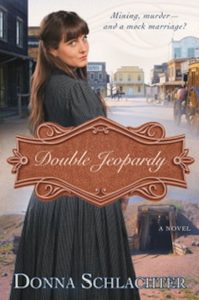 The hero is Ezekial Graumann. Most everybody calls him Zeke. Zeke and his family own a fairly large piece of land in southwestern Colorado near the town of Silver Valley. Zeke has two married brothers, as well as two unmarried sisters. In good years, with enough rain, their land can support the three families if they are diligent and careful with their stock. However, the last few years have seen droughts and not enough snowfall, and the grazing is poor. Zeke wants to build his own house, maybe get married and have his own family, but the land won’t support another household.
The hero is Ezekial Graumann. Most everybody calls him Zeke. Zeke and his family own a fairly large piece of land in southwestern Colorado near the town of Silver Valley. Zeke has two married brothers, as well as two unmarried sisters. In good years, with enough rain, their land can support the three families if they are diligent and careful with their stock. However, the last few years have seen droughts and not enough snowfall, and the grazing is poor. Zeke wants to build his own house, maybe get married and have his own family, but the land won’t support another household.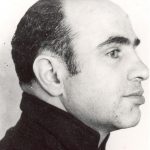
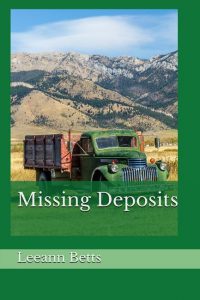


 In Deadly Additive, Donn Taylor named a secondary character who always operated on the edge, Brinkman. An accident? I don’t think so. Ian Fleming gave us some insight into the character of his antagonist in The Richest Man in the World when he named him Auric Goldfinger.
In Deadly Additive, Donn Taylor named a secondary character who always operated on the edge, Brinkman. An accident? I don’t think so. Ian Fleming gave us some insight into the character of his antagonist in The Richest Man in the World when he named him Auric Goldfinger.
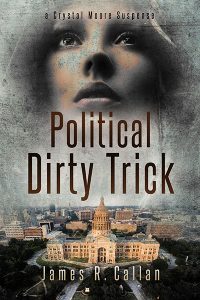
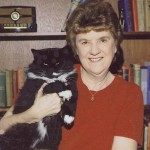 she pens a series of cozy cat mysteries and a series of humorous WWII mystery/adventures. She has published seven novels and an anthology of short stories highlighting the lives of cats. Fourteen additional anthologies include her humorous tales
she pens a series of cozy cat mysteries and a series of humorous WWII mystery/adventures. She has published seven novels and an anthology of short stories highlighting the lives of cats. Fourteen additional anthologies include her humorous tales